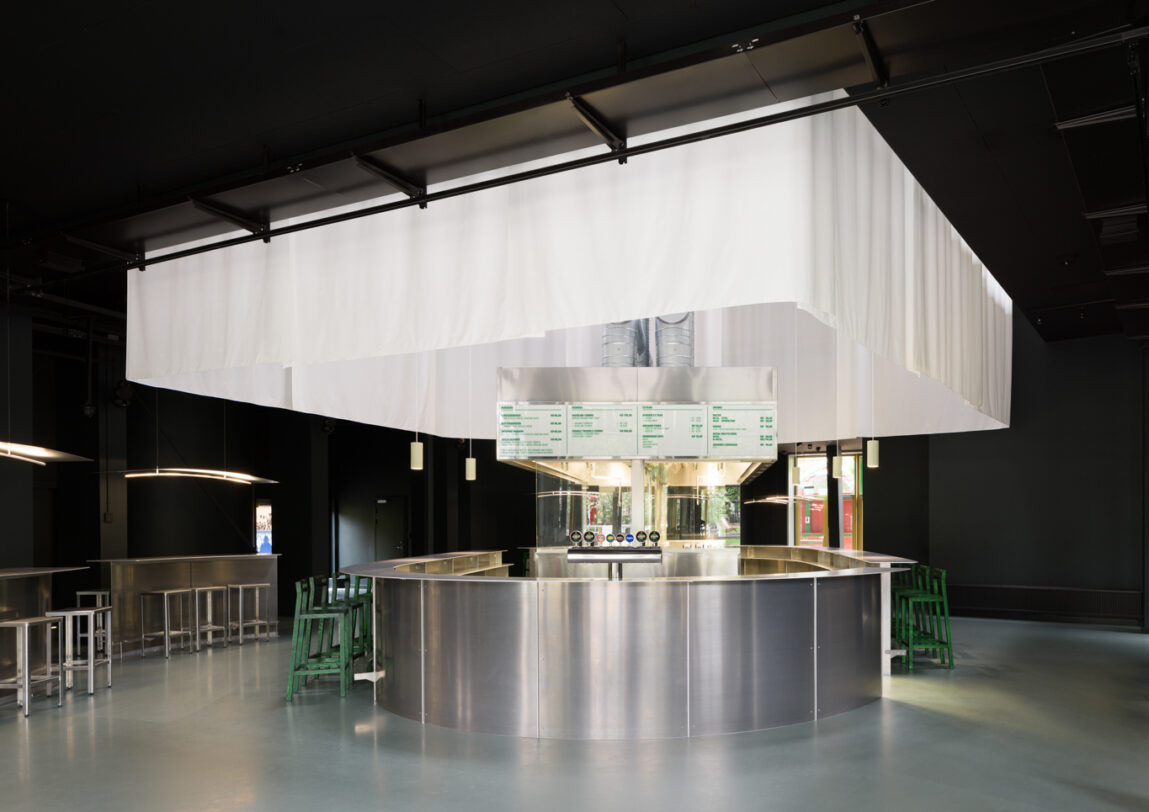Text Dzenana MUJADZIC | ERSCHIENEN IN CHAPTER №VII »NORMAL THINGS« – WINTER 2022/23
Wie der Name des dänischen Architekturstudios Archival Studies bereits impliziert, beginnt ihre Arbeit immer mit einer Bestandsaufnahme des bereits Existierenden. In Bezug auf ihr Projekt Gasoline Grill in Tivoli Gardens, Kopenhagen, bedeutete das eine bewusste Auseinandersetzung mit dem traditionsreichen, oft interpretierten Konzept des amerikanischen Diners. Wir sprachen mit Gründer Benediktas Burdulis.
Chapter What was the initial thought process when you started working on the the Gasoline Grill project?
Archival Studies Our goal was not only to establish an efficient, comfortable, and high-quality contemporary diner, but to create a spatial experience out of the Gasoline Grill identity, and to make the most of the inherent qualities of the unusual space that we were given to work with at Tivoli Gardens. We began by examining Gasoline Grill and developing our own understanding of the core values of the brand, such as authenticity and simplicity. Next, when thinking about burger culture, we were reminded of the drive-in diners of Western America, which had a close connection to the automotive industry. As the automotive industry and infrastructure grew in the USA, so did burger culture. The use of metals, curves, and bright lighting in some of the existing Gasoline Grill locations made us think of the streamlined, industrial, and pragmatic aesthetic of those Western USA diners.
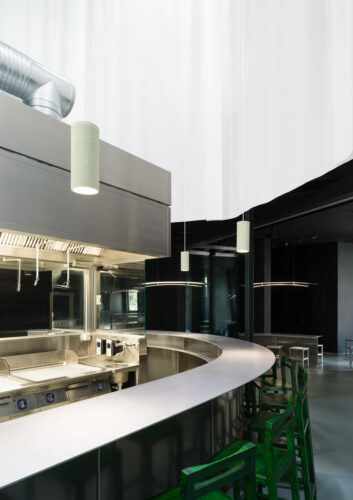

Another parallel theme that came to mind through association was the California light and space art movement, which took place at the same time, and whose artists were also influenced by the rising industry in the USA, especially the finishes used in the automotive industry. The goal for many of these artists was not to create objects, but to create experiences using light, spatial qualities, and color to affect human perception, and to allow people to see the world in new ways. We looked at references from these movements as sources of inspiration in this project as well.
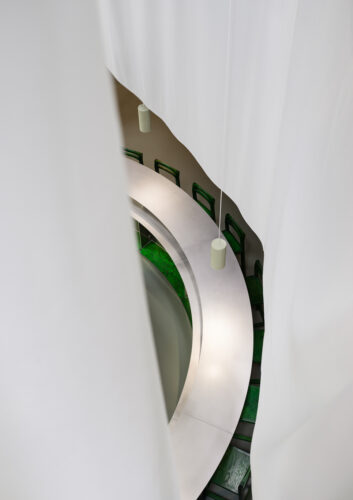
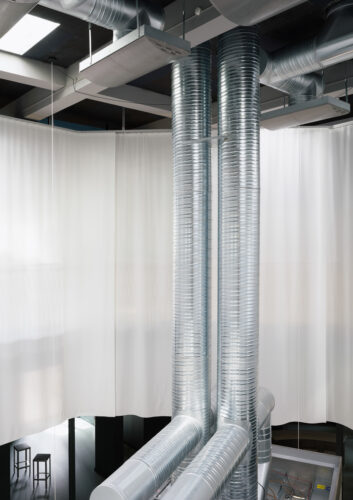
Chapter Usually, when you think of a diner you imagine it to be rather retro looking. The extensive use of stainless steel contributes to an almost futuristic-looking design. How does the choice of material influence the overall spatial experience?
Archival Studies It’s interesting to consider retro and futuristic aesthetics in relation to diners and I would like to point out that the streamlined aesthetic, which was used in many of the now-retro-looking diners, was regarded as being quite futuristic in its own time. As it was in our interest to create a high-quality contemporary diner, as well as a spatial experience out of the Gasoline Grill identity, we chose to work with durable and long-lasting aluminium and stainless steel so that we could build the interior from surfaces that did not require a hidden structure to support them. When rolled into curves or folded into angles, the strength of these materials allowed for the surface to become the structure itself. This allowed us to reach the same kind of authenticity and simplicity that Gasoline Grill achieves in their products.
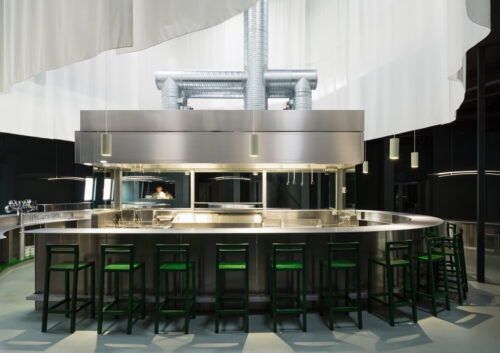
Chapter There’s many aspects to the concept of the diner, one is that it is supposed to be a place to socialize but you also want to keep things speedy. How can design bring these two seemingly opposing claims together?
Archival Studies By placing the central seating area around the open kitchen in the form of a circular bar, we wanted to bring the customers closer to the cooks. In this way, they could connect to, understand, and appreciate the entire process of work that goes into their meal. On the other hand, this makes the service more efficient, as servers do not need to travel far to deliver meals. Lastly, a circular communal bar can encourage new interactions between strangers.

Chapter What’s the biggest challenge when designing something that is so deeply rooted in popular culture?
Archival Studies On the contrary, working with a subject that is so deeply rooted in popular culture has made it easier for us to form the concept for this project, as there is such a large field of material to relate to and to use as references or inspiration.

